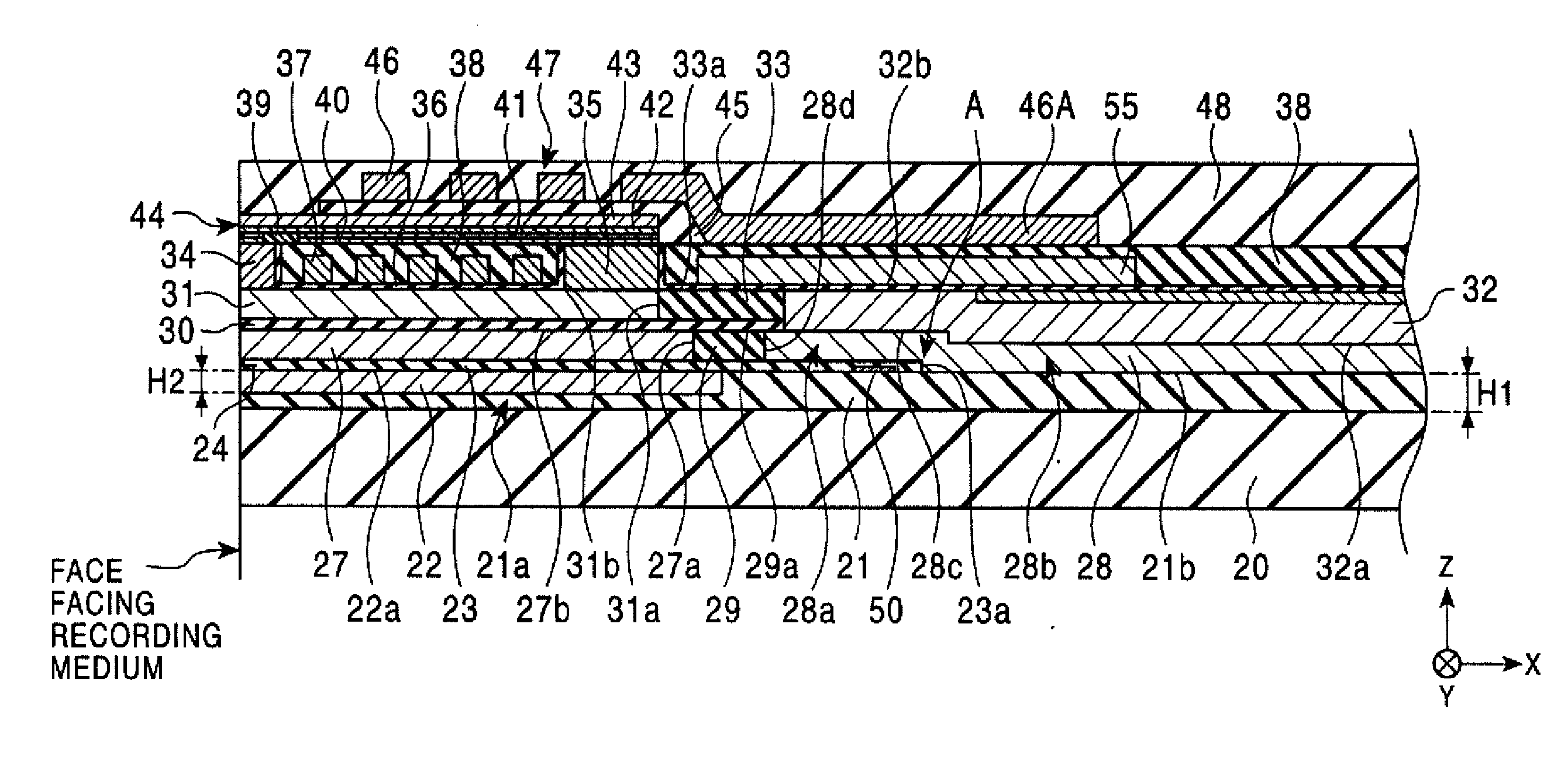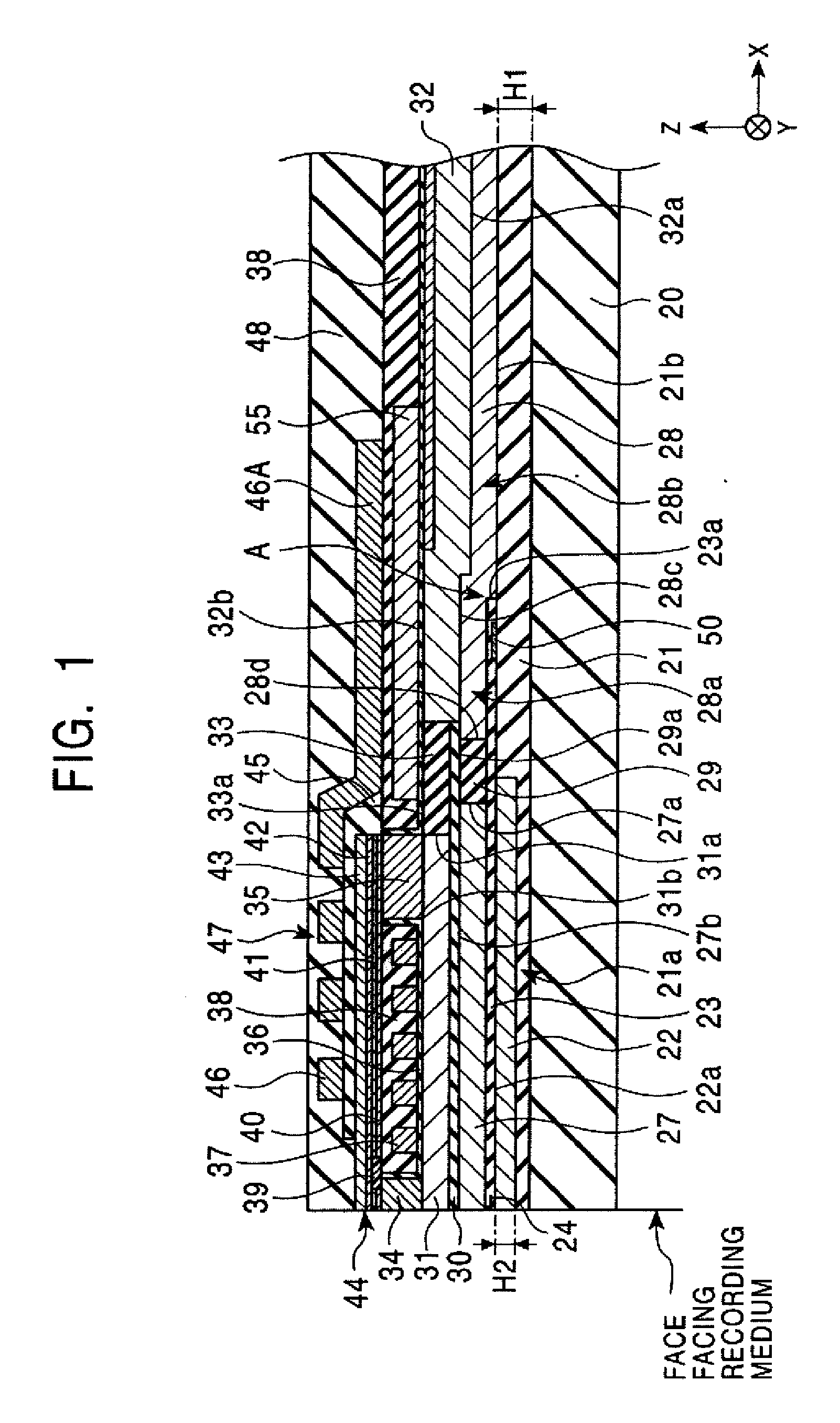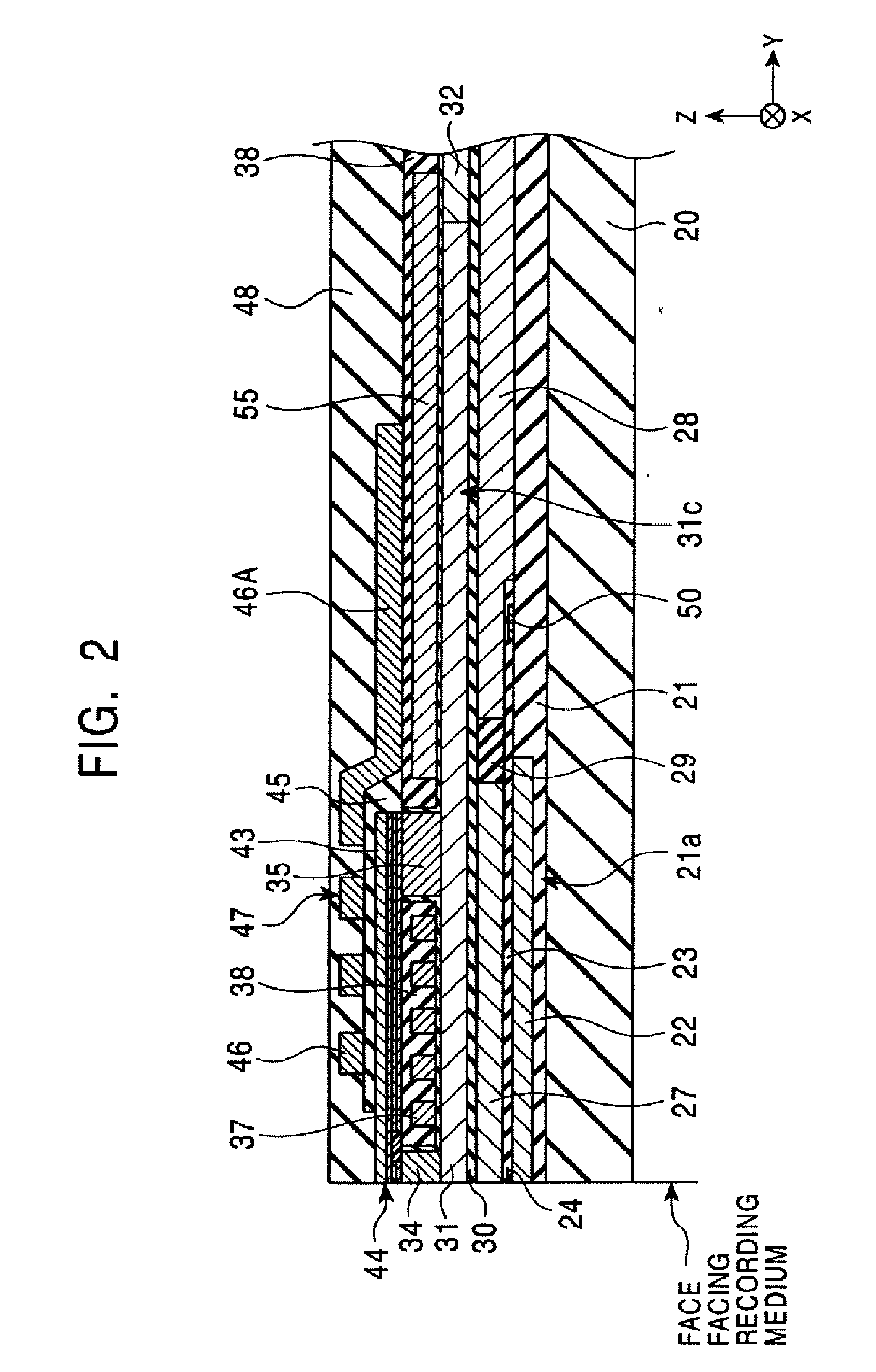Thin-film magnetic head and manufacturing method thereof
a thin-film magnetic head and manufacturing method technology, applied in the field of thin-film magnetic head, can solve the problems of deterioration of reproduction properties, inability to efficiently discharge heat from the first shield layer b>31/b>, and insufficient heat transmission to the first shield layer, etc., to achieve excellent reproducibility and suppress the temperature rise of the thin-film magnetic head
- Summary
- Abstract
- Description
- Claims
- Application Information
AI Technical Summary
Benefits of technology
Problems solved by technology
Method used
Image
Examples
first embodiment
[0072]FIG. 1 is a partial longitudinal section view illustrating the structure of the thin-film magnetic head according to the present invention.
[0073] Note that in the following, the X direction in the drawing will be called the track width direction, and the Y direction in the drawing will be called the height direction. Also, the Z direction in the drawing is the direction of movement of the recording medium (magnetic disk). Also, the front edge face of the thin-film magnetic head (the face farthest to the left in FIG. 1) will be called the “face facing the recording medium”. Further, in each layer, the term “front edge face” means the left side in FIG. 1, and the term “rear edge face” means the right side in FIG. 1.
[0074] Also, the thin-film magnetic head described with reference to the drawings is a thin-film magnetic head which is a compound type thin-film magnetic head of a recording head portion (also referred to as “inductive head”) and a reproducing head portion (also ref...
fourth embodiment
[0120]FIG. 6 is a partial longitudinal section view illustrating the structure of the thin-film magnetic head according to the present invention. While only the reproducing head (MR head) is shown in FIG. 6, the structure of the recording head provided on the reproducing head portion has already been illustrated by way of FIGS. 1 through 3, any arrangement of which may be employed, and accordingly the structure of the recording head has been omitted from the drawing. FIG. 6 will be described primarily with regard to the structure near the under layer 21, which is a structural feature.
[0121] With the thin-film magnetic head shown in FIG. 6, a first recess 21a is formed in the under layer 21 formed on the slider 20, extending in the height direction form the face facing the recording medium, with the lower shield layer 22 formed within this first recess 21a.
[0122] Further, a second recess 21c extending in the height direction is formed in the under layer 21 further hindwards in the h...
fifth embodiment
[0135]FIG. 7 is a partial longitudinal section view illustrating the structure of the thin-film magnetic head according to the present invention. The point that differs from the thin-film magnetic head shown in FIG. 6 is that a third recess 21d is formed in the under layer 21 further hindwards in the height direction than the lower shield layer 22 formed embedded in the first recess 21 a formed in the under layer 21, and a hind region 28b of the second metal layer 28 formed extending in the height direction from above the gap layer 23 covering over the magnetoresistance effect element 24 and the electrode extracting layer 50 bends downwards at a step B between the gap layer 23 and the third recess 21d and is formed embedded within the third recess 21d. Embedding the hind region 28b of the second metal layer 28 in the third recess 21d enables the hind region 28b of the second metal layer 28 and the slider 20 to be brought into closer proximity. With the embodiment shown in FIG. 7, th...
PUM
| Property | Measurement | Unit |
|---|---|---|
| depth H2 | aaaaa | aaaaa |
| depth H2 | aaaaa | aaaaa |
| track width Tw | aaaaa | aaaaa |
Abstract
Description
Claims
Application Information
 Login to View More
Login to View More - R&D
- Intellectual Property
- Life Sciences
- Materials
- Tech Scout
- Unparalleled Data Quality
- Higher Quality Content
- 60% Fewer Hallucinations
Browse by: Latest US Patents, China's latest patents, Technical Efficacy Thesaurus, Application Domain, Technology Topic, Popular Technical Reports.
© 2025 PatSnap. All rights reserved.Legal|Privacy policy|Modern Slavery Act Transparency Statement|Sitemap|About US| Contact US: help@patsnap.com



